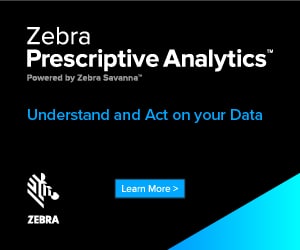Loyalty programs are essential components of the customer and associate experiences, but they can also be major points of risk for loyalty fraud. In the battle to win over finicky consumers, retailers have become very generous with their loyalty perks—sometimes so generous that customers and employees may be driven to abuse the system for their own gain. This is one reason why loyalty fraud is a top area of focus for many loss prevention (LP) teams today.
In my 12-plus years in apparel retail LP, loyalty fraud was always a priority. Over the years I identified three simple, yet effective strategies for identifying and rooting out this activity.
Look for Fraud across Channels

I’ve previously written LPM Voice articles about how the gaps between in-store and e-commerce channels often create opportunities for fraud. Loyalty fraud is no exception. In one memorable example from my LP days, a crafty customer figured out a way to sidestep our security protocols and quickly sign up for numerous loyalty accounts, accumulating sign-up rewards for each account. The customer would then redeem the rewards via online “purchases” that totaled at or near zero dollars.
What helped us to identify and resolve this subtle instance of loyalty fraud was having an analytics solution with cross-channel visibility. Using prescriptive analytics, we were able to determine:
- What was happening.
- Why it happened.
- How much it was costing us.
- What to do about it.
- Who should do it.
Having identified the fraud, we were able to both address the customer engaging in the loyalty fraud as well as put additional systemic controls in place in the loyalty program that prevented similar schemes from being executed in the future.
Catch Cases in Their Infancy
Many loyalty-program policy violations are not actually fraud, but simple acts of non-compliance. Some cashiers may be uncomfortable asking customers for personal information to link a loyalty account and may enter their own information simply to avoid that interaction. While these violations may begin innocently enough, loyalty non-compliance can be a slippery slope—what starts as a simple shortcut can quickly snowball into loyalty fraud. For example, a case of an employee entering his or her own loyalty information instead of a customer’s information to save time at checkout could easily morph into full-blown fraud once the associate realizes this method is accumulating rewards.
Remember that it is much, much cheaper to retrain a non-compliant associate than to terminate them, rehire a new associate, and train that new person—but retraining is no longer an option if the cashier progresses to fraud. You need to invest in an advanced analytics solution, like prescriptive analytics, that can recognize violations in real time. This workflow gives you enough advance notice to intervene with retraining before the associate can become emboldened to start committing fraud. Your savings will be huge—both in terms of deterring future violations and not having to fire and replace the non-compliant employee.
Quantify the Financial Impact of Loyalty Fraud
When administering a loyalty program, a retailer’s marketing team is looking to create a frictionless experience that adds value for the customer. However, as LP professionals know all too well, “frictionless” and “exploitable” can quickly become synonymous once the wrong segment of the population learns about program loopholes. Even though both the LP and marketing teams have the best interests of the business at heart, at times balancing customer experience and fraud controls in a loyalty program can turn into a tug-of-war between these two teams.
So how do we convince our business partners to inject the right amount of (carefully engineered) friction into a loyalty program for minimal loyalty fraud risk? I recommend coming to the conversation with numbers. Using a solution like prescriptive analytics, you can consistently track the dollar value associated with identified policy and fraud issues to illustrate to the business how the lack of controls is impacting the bottom line. This was how our team helped to resolve the sign-up rewards issue I described above—documenting both the nature and the financial consequences of the exploited loophole made it simple to explain the needed changes to leadership.
For more information on using prescriptive analytics to combat loyalty fraud, visit zebra.com/prescriptiveanalytics.
"loyalty" - Google News
May 20, 2021 at 09:00PM
https://ift.tt/2T2xNxH
3 Critical Tips for Identifying and Resolving Loyalty Fraud - Loss Prevention Magazine
"loyalty" - Google News
https://ift.tt/2VYbPLn
https://ift.tt/3bZVhYX
Bagikan Berita Ini
















0 Response to "3 Critical Tips for Identifying and Resolving Loyalty Fraud - Loss Prevention Magazine"
Post a Comment